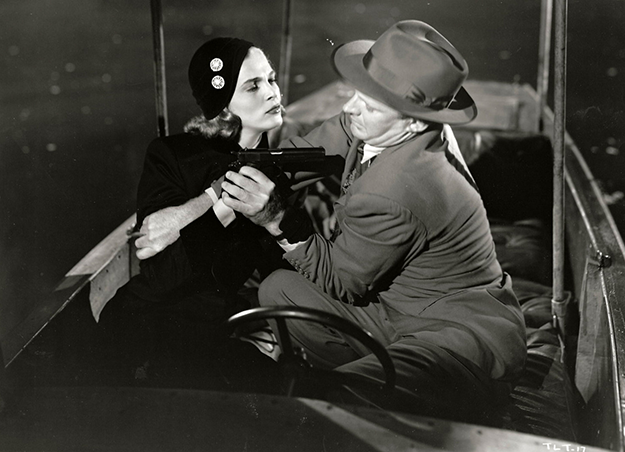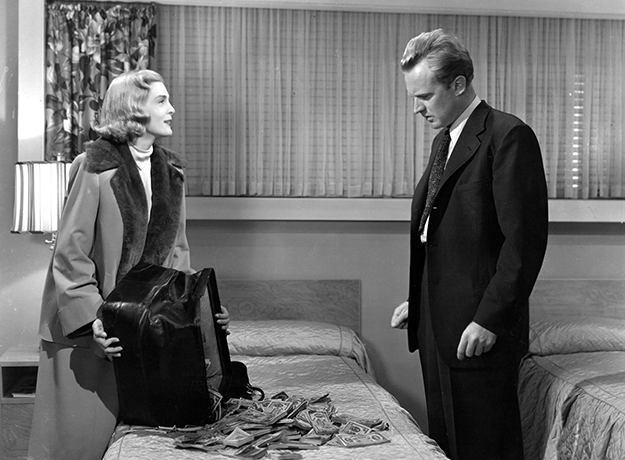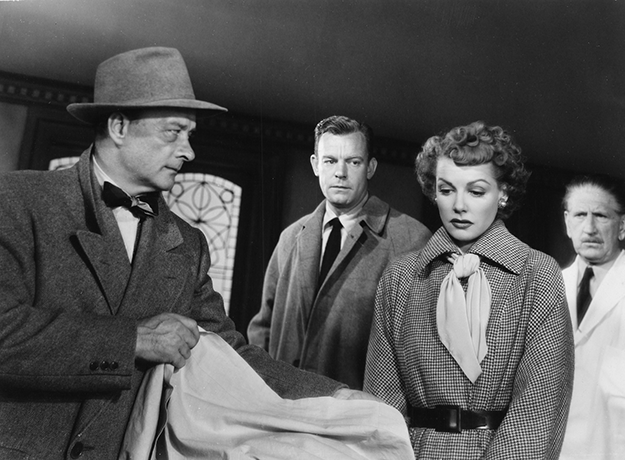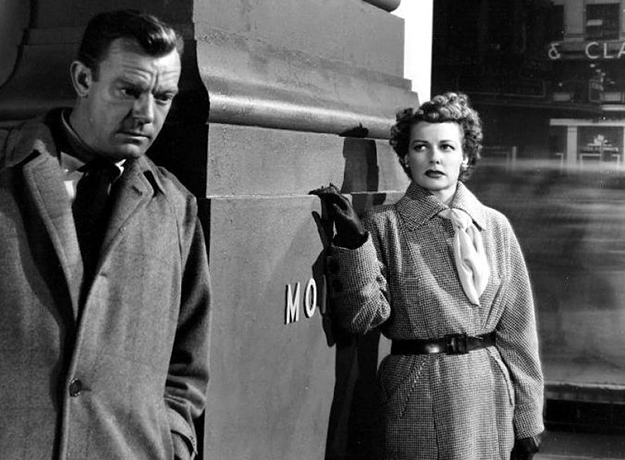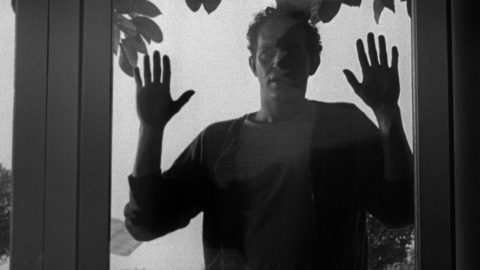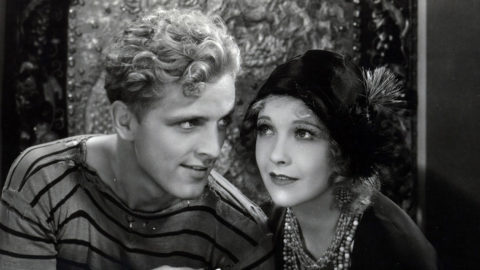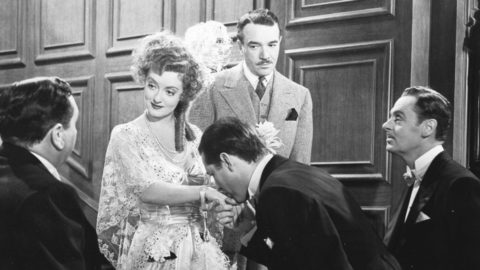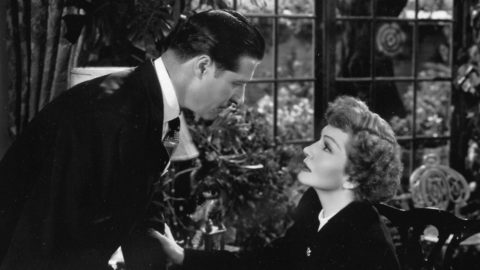Too Late for Tears (1949) + Woman on the Run (1950)
Too Late for Tears
In this election season, with its resentments roiling in all directions, noir fits the zeitgeist like nothing else. The system’s rigged, chump. Play the game as long as you can—you’ll still roll snake eyes.
But this bitter little world does have its compensations, and this month brings two: a couple of films restored by UCLA Film & Television Archive and the Film Noir Foundation that are—or might as well be—brand spanking new. Done up in lavish DVD/Blu-ray packages by Flicker Alley, with booklets and extras, Too Late for Tears, directed by Byron Haskin in 1949, and Woman on the Run, from Norman Foster in 1950, are back, and looking better than at any time since they first hit theaters. Woman on the Run in particular had a near-death experience when what was thought to be the last print was consumed in a fire in 2008. (The story of its eventual rescue is well-told by Film Noir Foundation President Eddie Muller in the booklet’s essay.)
Technically speaking, Too Late for Tears wasn’t unavailable. It was languishing in public-domain hell—laced with juddering splices, missing an end credit, everything the color of dishwater. Sometimes, such as when I co-sponsored a blogathon a few years back to help fund the FNF’s restoration of Try and Get Me, you get oh-so-helpful people popping up to announce that hey, that movie doesn’t need help, it’s available on YouTube. Do not listen to these people. I watched Too Late for Tears in the same version that was on YouTube, with the result that on my blog, I admired the performances and twisty screenplay but complained about “the cut-rate look of the thing.”
Too Late for Tears
In the sparkling restoration, the film doesn’t look cut-rate at all. The contrasts are beautiful, the night scenes glow, you can see the flash of gunfire that illuminates one character’s face as he dies. Even back in 2005, I recognized Too Late for Tears as a well-constructed noir in which nearly all of the characters have more going on than it first appears. The new version released by Flicker Alley at last does justice to the cinematography of William Mellor, and it’s the difference between a decent little movie and one that’s near-great.
Via screenwriter Roy Huggins, who adapted his own novel, Too Late for Tears has a classic premise about the corrosive effect of unearned wealth. Money drops in the lap of Jane Palmer (Lizabeth Scott) and her nebbishy husband Alan (Arthur Kennedy), as they’re arguing about whether to attend a dull party with friends who Jane says patronize her. Or, technically, the dough drops into the backseat of their convertible, packed into a satchel and flung there by someone in a passing car—stacks and stacks of bills which, as Jane notices right away, have delightfully non-sequential serial numbers. (The traceability of cash is, one notes, not the first thing your average housewife would check.) Alan wants to hand it all over to the cops, the dope. Jane wants to keep it. Getting in the way of her keeping the money will turn out to be a very, very bad idea.
Hollow-eyed, so thin that at times her costumes bag, the late Scott is chilling as Jane, materialism made flesh. She can mimic a normal person’s feelings, but she’s never developed any herself. The one time that we see Jane approaching pure, giddy happiness is when she goes on a shopping spree with a small part of the stash. She strokes a mink stole and other store boxes with real tenderness, before she hides all the purchases under the sink.
Woman on the Run
Alan warns Jane that the money has an owner who’ll be coming back to collect, and so it’s no surprise when the great Dan Duryea shows up at the Palmer residence to have a look-see around the living room, and in the bedroom, and in the kitchen cabinets, and then deep into the eyes of Jane to see what kind of a broad he’s dealing with. And in those eyes, he glimpses the Arctic soul beneath… and he finds the whole hardhearted package sexy as hell. “I say let’s kill these people in style,” he tells Jane, in one of noir’s most delightfully blunt partnership agreements. One thing that sets Too Late for Tears apart is that Duryea, the abusive heel in so many movies, is more appealing than the woman he’s trying to push around. As noir historian (and FNF treasurer and board member) Alan K. Rode says, “How many femme performers can make Dan Duryea playing a slimeball appear sympathetic?”
As good as Too Late for Tears is, I confess a preference for Woman on the Run. One reason is the phenomenal location photography of San Francisco and a couple of Los Angeles stand-ins that include the Santa Monica pier. The film opens late at night, with Frank Johnson (Ross Elliott) walking his dog up the steep steps of a San Francisco neighborhood (actually the long-gone Bunker Hill section of Los Angeles), just in time to witness a murderer push his victim out of the car and plug the dying man once more for good measure. Foster and DP Hal Mohr give the sequence a menacing rhythm, as first Frank stops to fire up a cigarette by a sign that says “Curb Your Dog,” and then the unseen killer offers his victim a light just before pulling the trigger.
When the cops (Robert Keith and Frank Jenks) arrive, they tell Frank he’ll have to testify, causing Frank to hoof it out of there. They locate Frank’s wife, Eleanor (Ann Sheridan). She’s estranged from her husband, but still disinclined to help the cops make Frank a sitting duck for a killer’s revenge. Into the mix comes a reporter played by Dennis O’Keefe, who persuades Eleanor to help him track down her husband and give his paper an exclusive, in exchange for $3,000. As they attempt to track Frank, it becomes clear that the killer as well as the cops are not far behind.
Woman on the Run
It’s a great opportunity for Foster to take the audience on a tour of a San Francisco that hadn’t yet lost its dockside, working-class character, through side streets, grimy bars, and cheap restaurants. Several standout scenes take place in a Chinese nightclub, where Reiko Sato and Victor Sen Yung get small but telling roles.
And aside from the cityscapes, there’s Ann Sheridan. Tagged early with a sex-symbol nickname, “The Oomph Girl,” that she described as the sound a fat man makes when bending to tie his shoes, Sheridan was so unaffected on screen that she got little credit for acting at all. Her on-screen toughness felt authentic and came laced with humor, a raised eyebrow for the local busybody, a shrug for the sleazy guy who’s hitting on her. She’d recently bought out her contract at Warner Brothers, and this production, made well off the beaten track for a small outfit called Fidelity Pictures, was her attempt to carve a new path.
Thus her role is deliberately most unlike Sheridan’s usual, starting with the way her famous figure is shrouded in a big plaid coat for virtually the entire running time. The focus here is on Sheridan’s smoky voice delivering one world-weary quip after another. Her duels with Robert Keith, as he tries to locate the missing husband, are a particular delight. “Who are his friends?” asks Keith. “I don’t know his friends. The dog is our only mutual friend,” says Sheridan. In addition to being prickly, Eleanor is proudly undomestic, her kitchen cabinets lined with cans of dog food. “Don’t you eat anything but dog food?” asks the cop. “He’s not particular, and I’m lazy, so we eat out,” comes the unapologetic reply.
An attempt to market Woman on the Run in its first release as a kind of women’s picture was not successful, but the idea wasn’t completely off, either. As Frank’s danger grows with each ticking hour, we see more of what lies underneath Eleanor’s elaborate indifference. “In a kind of perverse way,” says Rode, “it is film noir’s primer on marriage counseling and relationship restoration.” Nothing like a murder investigation to bring a couple together.
Farran Smith Nehme writes about classic film on her blog, Self-Styled Siren, and recently published her first novel, Missing Reels. She is a member of the New York Film Critics Circle.



